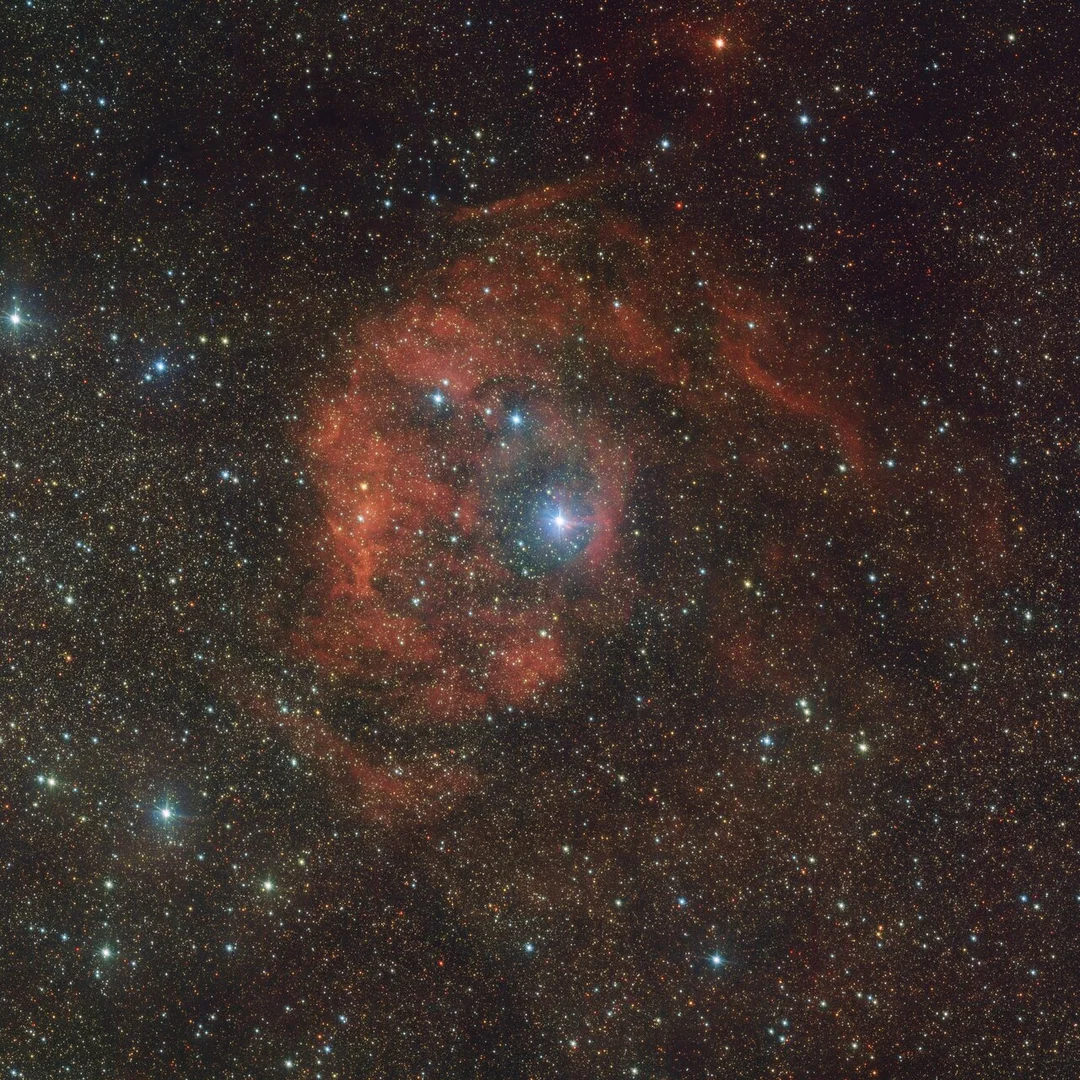
‘Cosmic Imposter’ Star Lights Up Distant Nebula in Fiery Red Glow: A Stellar Whodunit
Prepare to have your cosmic expectations upended! A stunning new image captured by the European Southern Observatory's VLT Survey Telescope reveals a celestial drama unfolding 6,000 light-years away. The star of the show? The vivid red nebula Sh2-46, also known as Gum 80, ablaze with an intense red hue. But the plot thickens because the brilliant blue-white star illuminating this nebula isn't who it seems. Astronomers are calling it a "cosmic imposter," a runaway star with a hidden past.

HD 165319, the dazzling blue-white giant at the heart of Sh2-46, is the prime suspect in this cosmic mystery. This type of star, an O-type star, is among the rarest and most luminous in the universe. It radiates intense ultraviolet radiation, ionizing the hydrogen gas within the nebula and causing its characteristic red glow. However, the evidence suggests it's an alien interloper.
The key clue? A distinct bow shock adjacent to the star, a telltale sign that HD 165319 is plowing through the nebula, compressing gas and dust in front of it like a ship cutting through water. This suggests the star isn't gravitationally bound to the nebula but rather a transient visitor.
The leading theory points to the nearby Eagle Nebula, a bustling star-forming region famous for the iconic "Pillars of Creation," as HD 165319's original home. Complex gravitational interactions within dense, young star clusters can eject stars at high velocities, turning them into stellar exiles. These runaways can then travel across the galaxy for eons, eventually infiltrating unrelated nebulas like Sh2-46.

“This star should not be here,” declared the European Southern Observatory. And while HD 165319 currently dominates Sh2-46's appearance, its influence may be fleeting. Like a cosmic tourist, it may soon move on, leaving the nebula to evolve and perhaps even change its shape and brightness.
This discovery highlights the dynamic nature of the universe and the intricate interplay between stars and their environments. Runaway stars like HD 165319 provide valuable insights into the life cycles of massive stars and the forces that shape our galaxy.

What do you think? Will HD 165319 continue its journey and leave Sh2-46 behind? Share your thoughts and theories in the comments below!